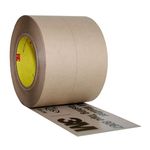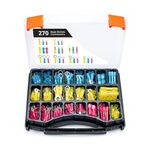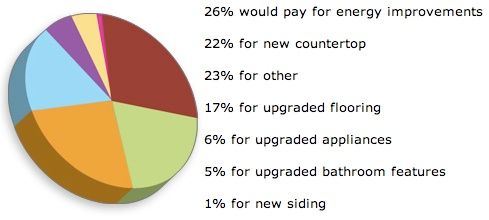
The path to energy efficiency for the members of the National Association of Home Builders will be lined with projects that not only meet the Department of Energy’s Builders Challenge requirements, but also match homebuyers’ notions of affordability, the association noted last week at a press conference during the International Builders’ Show in Orlando, Florida.
A subtext of the press conference was, too, that high-tech solutions to reducing reliance on the grid – namely renewable-energy systems – still don’t offer enough bang for the buck.
“We haven’t seen the cost benefit yet of solar power” and other renewable energy systems, said Nate Beauregard, quality coach for David Weekley Homes, which has built more than 1,000 homes certified under the Builders Challenge program since it was launched at the IBS in February 2008. All told, about 5,000 homes have found their way to Builders Challenge certification, which requires at least 30% more energy efficiency than comparable homes built to the 2004 International Energy Conservation Code. Bringing a home’s energy efficiency performance to the Builders Challenge standard adds from 3% to 5% to overall construction costs, one builder said.
The press conference echoed some of the observations made at an IBS panel discussion whose principal takeaway was that the growth of the green home market is tied tightly to the affordability of green homes, which, thanks in part to new manufacturing technologies, is gradually improving.
Leaning hard on the HERS Index
Energy efficiency, for those seeking Builders Challenge certfication, is measured using the Residential Energy Services Network’s Home Energy Rating System (HERS) Index, which requires a full energy efficiency audit of the home and a computerized simulation analysis to calculate a HERS score. A score of 100 would indicate the home is performing to the standard set by code, while a score of zero would mean the home is operating at net zero energy. A HERS score of 70 or lower is required for Builders Challenge certification. The DOE uses the HERS rating scale to depict what the agency calls its EnergySmart scale, a consumer-friendly chart showing where a rated home’s performance falls relative to code.
Builders Challenge certification also requires third-party verification of several quality criteria, including those addressing safety, HVAC requirements, kitchen and bathroom ventilation, window performance, and other components.
NAHB was keen to note that the scoring tool used for projects designed to meet NAHB’s National Green Building Standard has a dual-certification option for builders and remodelers also seeking the Builders Challenge label. The National Green Building Standard extends beyond Builders Challenge energy efficiency requirements to include water efficiency, indoor environmental quality, and other green building practices.
Fine Homebuilding Recommended Products
Fine Homebuilding receives a commission for items purchased through links on this site, including Amazon Associates and other affiliate advertising programs.

Affordable IR Camera

8067 All-Weather Flashing Tape

Reliable Crimp Connectors
























View Comments
It's good to see that some improvements are done to the alternative way of generating and storage of energy in homes. We won't go very far with trying to be eco-friendly if we don't keep focus on the initiatives to implement these methods in a cost-efficient way.